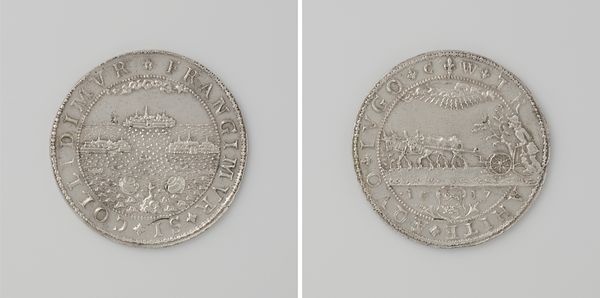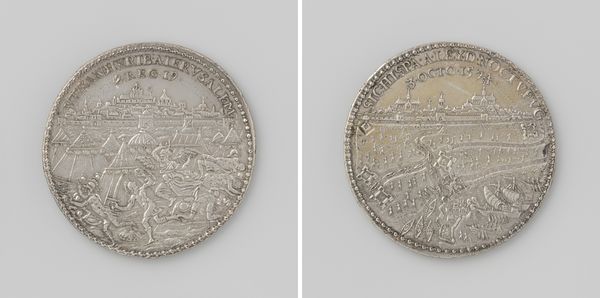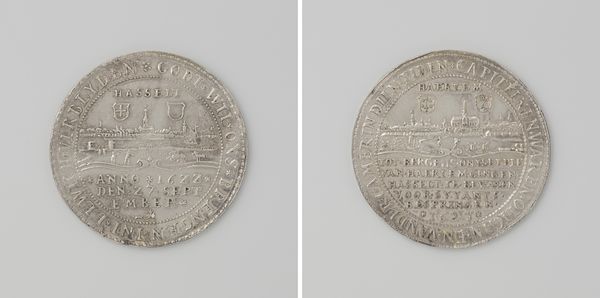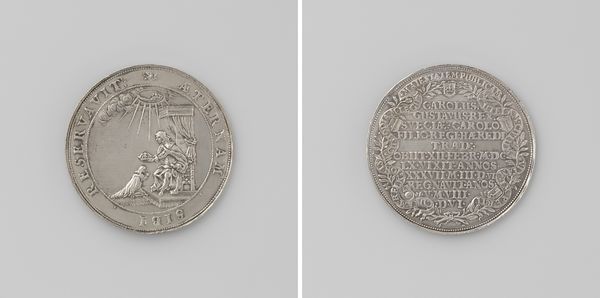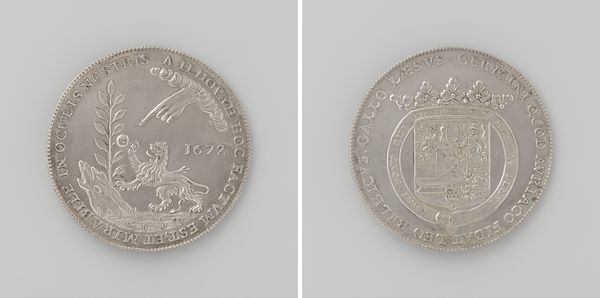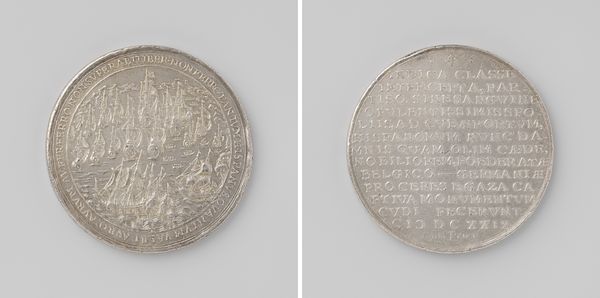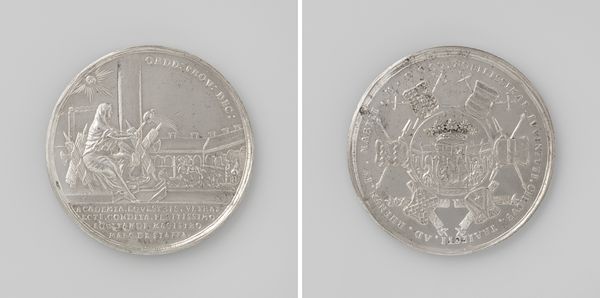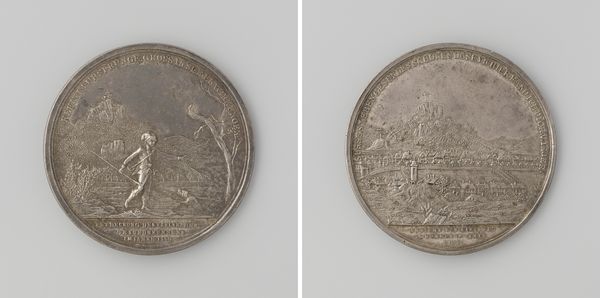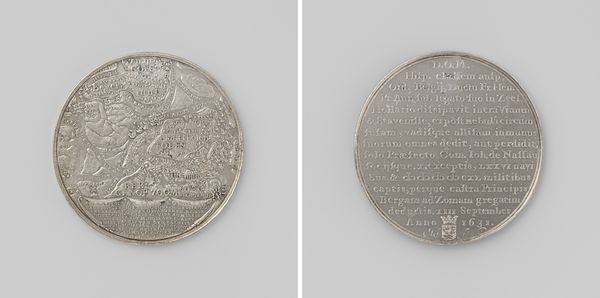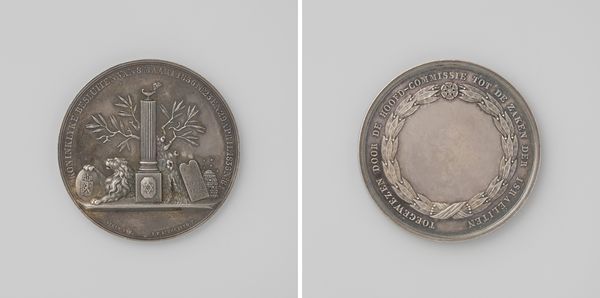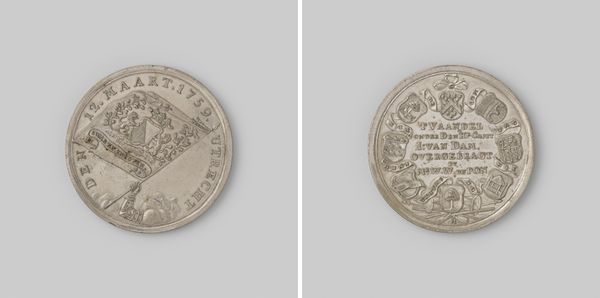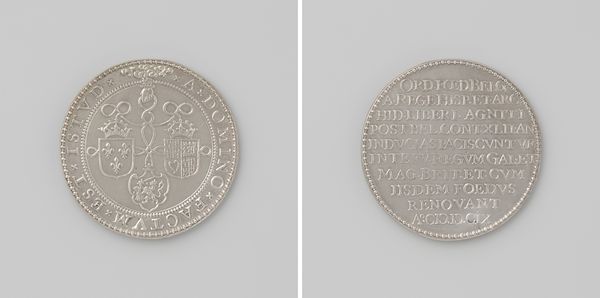
print, metal, engraving
#
dutch-golden-age
# print
#
metal
#
old engraving style
#
engraving
Dimensions: diameter 6.4 cm, weight 83.91 gr
Copyright: Rijks Museum: Open Domain
Curator: Here we have a Dutch Golden Age engraving dating from 1629. It’s called “Verovering van de Zilvervloot door Piet Hein,” or "The Capture of the Silver Fleet by Piet Hein". Editor: My first impression is…power. Despite the small scale and the monochromatic palette, the details and text give a sense of momentous achievement and historical weight. What am I looking at more specifically? Curator: You’re seeing an allegorical medal struck to commemorate Piet Hein’s capture of a Spanish treasure fleet in 1628. Look closely; the medal depicts a map of the world on one side, quite literally illustrating Dutch reach, while the other side represents the naval battle. Editor: Ah, yes, I see now! So the world map presents Dutch cartographic knowledge and ambitions on the world stage. Do you see symbolism at play here, Iconographer? Curator: Absolutely. Notice how prominently America is featured, emphasizing its exploited resources. The act of capturing the Silver Fleet isn’t just a military victory; it’s a statement about changing global power dynamics. Dutch mercantile power literally encircles the globe. The ships too – you can almost feel their dynamism. Editor: It seems like this was an extremely effective piece of propaganda in its day. But knowing what we know about colonialism, the text surrounding that global projection becomes uncomfortable, a self-aggrandizing justification of exploitation. Curator: Precisely. Dutch economic success depended directly on these colonial actions, on the silver it pillaged and brought home to fund more merchant voyages, and in turn the suffering and stolen labor. It speaks to deeply embedded ideologies about who deserved wealth. Editor: So the engraving, beyond its surface narrative, encourages critical dialogue with historical frameworks centered on class and capital and raises necessary questions about its own historical positioning. Curator: Yes, viewing this now urges that the Dutch Golden age be seen in terms of the historical oppressions and injustices on which it relied and reminds us how profoundly intertwined capitalism and colonialism are. Editor: Indeed. Reflecting on the context of creation invites the viewer to critically unpack the historical, political, and social currents of its time, prompting much needed reflection.
Comments
No comments
Be the first to comment and join the conversation on the ultimate creative platform.
